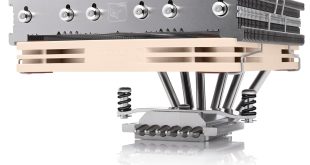The original Corsair H100 was renowned for being very easy to install. However, Corsair have managed to simplify the installation process even more. We will be using our ASRock Z77 Extreme6 motherboard to demonstrate the installation procedure.
Corsair recommend installing the radiator into your case before attaching the CPU block to the motherboard. However, we wouldn't advise this if your case doesn't have a cut out section in the motherboard tray to allow CPU cooler backplates to be installed without removing the motherboard. In this case we would attach the backplate and stand-offs to the motherboard before installing the motherboard into the case.
Before installing the radiator into the case, the fans need to be attached to the inside of the radiator. This is a simple process, requiring us to screw the fans into place in each corner. The cooler can then be screwed into the roof of your case.
The backplate must be placed on the back of the motherboard so the four protruding screw threads poke through the corresponding holes in the motherboard. The position of these can be adjusted to suit both Socket 1155/1156 and Socket 1366 motherboards.
We encountered a slight issue with two of the screw threads as the hexagonal shaped section on the back weren't straight and couldn't be adjusted by hand. We had to straighten them using a pair of pliers so they could be moved into the position for our Socket 1155 motherboard.
Once the backplate is in place, the four stand-offs can be screwed in from the top side of the motherboard. These provide the mounting points for the CPU block.
Next, the CPU block can be secured into place using the thumbscrews provided. We would recommend tightening them with a screwdriver to ensure the mounting pressure is sufficient. However, care must be taken to not over-tighten the screws.
Finally, all the cables need to be connected to your system. These include a 3-pin fan connector which needs to be plugged into your CPU fan motherboard header, a SATA power connector and an internal USB2.0 header which enables Corsair Link. Also, the two fans can be plugged into the CPU block using the provided adapter.
 KitGuru KitGuru.net – Tech News | Hardware News | Hardware Reviews | IOS | Mobile | Gaming | Graphics Cards
KitGuru KitGuru.net – Tech News | Hardware News | Hardware Reviews | IOS | Mobile | Gaming | Graphics Cards







